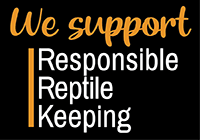Long-Term Maintenance of Bioactive Habitats: What You Need to Know

Written by: Joshua Halter 5/13/2025
Bioactive habitats are widely celebrated for their naturalistic beauty and low-maintenance appeal, but "low maintenance" doesn't mean no maintenance. Whether you’re working with a tropical terrarium for dart frogs or a dry, arid enclosure for leopard geckos, proper long-term care is essential to keep your bioactive setup thriving. In this guide, we’ll break down what long-term maintenance looks like—beyond basic husbandry—and how to ensure your bioactive enclosure remains truly self-cleaning and self-sustaining.
Arid vs. Tropical Bioactive Habitats: What’s the Difference?
Each biome requires a unique approach to long-term maintenance:
Arid Bioactive Habitats

Arid bioactive habitats support desert reptiles like bearded dragons, leopard geckos, or uromastyx. These setups are designed with well-draining substrates like The Bio Dude's Terra Sahara, that support a lower moisture content. You can also use a DIY mix, but creating one that's dry is much more complex than mixing topsoil and sand together. Maintaining multiple moisture barriers and proper aeration can be challenging for denser substrates. Here are some things to pay attention to in your arid habitat:
-
Humidity: Stay vigilant about moisture levels to avoid bad mold.
-
Biodegradables: Less frequent top-offs are needed with slower decomposition. You can rely on the back-end biological and fungal processes you implement into your habitat.
-
Clean-up crew (CUC): Use arid-tolerant species like powder orange isopods and springtails, but populations may grow more slowly. You may need to offer additional food sources for your CUC. Using rocks, such as slate stone, is another plus that benefits the soil and these animals.
Tropical Bioactive Habitats

Perfect for amphibians, dart frogs, or tropical reptiles like crested geckos. These enclosures use high-humidity substrates like The Bio Dude's Terra Flora or Terra Fauna.
You can also use a DIY mix, ABG mix, or something equivalent. Be sure the substrate aerates top to bottom, utilizes a drainage layer with a screen or supergrow, and drains effectively. Here are some things to pay attention to in your tropical habitat:
-
Humidity: Regular misting keeps the environment moist. Be sure the soil can dry out on the top layer occasionally (for Fauna setups).
-
Biodegradables: Need regular top-offs (leaves, moss, bark). You will also need to ensure that you are providing enough materials for your clean-up crew to thrive.
-
Clean-up crew (CUC): Thrives! Springtails, dwarf white isopods, and other types reproduce quickly and contribute to substrate turnover.
Are Bioactive Tanks Truly Self-Maintaining?
In the right conditions, yes, but only after several months of proper setup and stewardship. The CUC needs time to establish, and the soil biome—which includes fungi and beneficial bacteria—must also mature. This process requires time, patience, and trust in your substrate and methods.
To help your setup become self-sustaining:
-
Cycle your tank for 4–6 weeks before adding animals is recommended for optimal results, specifically in situations where it's desirable for plants to root deeply (i.e. for a heavy-bodied snake that burrows).
-
Seed the soil with a thriving CUC.
-
Introduce mycorrhizal fungi using a product like BioShot to foster healthy fungal and microbial development. As the soil matures, you can also use inoculants such as BioVive or a comparable brand.
-
Avoid chemical cleaners—they kill beneficial organisms.
-
Avoid oversaturation at all costs.
Biodegradables, Nutrient Cycling & Substrate Longevity
Biodegradables like leaf litter, sphagnum moss, cork bark, and hardwoods are essential for both nutrition and soil health. As these decompose, they replenish the substrate with organic compounds, but over time, important elements are depleted:
- Potassium, calcium, and magnesium—vital for plant growth and overall soil health—can leach out of the soil and be utilized by your CUC.
- Mycorrhizae (beneficial fungi) help plants absorb nutrients more efficiently and bind the soil structure.
- Regularly top off leaf litter and consider reintroducing BioShot or other microbial boosters every 4–6 months to refresh the soil biome, such as BioVive. Over time, you may need to top off some of your substrate as it develops a dust-like appearance from the consistent breakdown of matter via the clean-up crew and biological processes.
What Kind of Cleaning Is Actually Required?
Even in a self-sustaining enclosure, you'll need to do some occasional cleaning. Going bioactive does not create a fix and forget situation.
Spot Cleaning
- Remove uneaten food or waste that the CUC can’t break down fast enough. Old food can lead to bad mold (black mold), which can attract pests.
- Watch for black mold, especially in arid habitats where your CUC isn’t as robust. Other causes are bad aeration, over-saturation, and soil that's lacking in health.
- Urates (the liquid part of reptile feces) are not broken down by the clean-up crew.
- Substrate may need to be sifted lightly to ensure proper aeration.
Glass & Decor Maintenance
-
Clean glass with a reptile-safe cleaner or a simple vinegar solution.
-
Gently rinse decor in dechlorinated water every few months.
Other Long-Term Maintenance Tasks
- Plant Care: Prune overgrown foliage; replant if roots begin to rot or outgrow their space. If the roots are going into the drainage layer, be sure to watch it to ensure the drainage layer does not get compromised.
- Lighting & UVB: Replace UVB bulbs according to manufacturer guidelines—usually every 6–12 months. Ensure that you provide a proper photoperiod and light spectrum for the plants you are using. Healthier plants = healthier soil.
- Substrate Health Checks: Dig small test patches to examine the soil’s smell, texture, and microbial activity. An earthy smell is a good sign. A sour smell indicates a problem.
Learn more about how to maintain your plants with The Dude's articles about plant maintenance.
What to Expect Long-Term

Over 6–12 months, a well-maintained bioactive setup will stabilize. Here’s what you can expect to see:
- A thriving CUC working efficiently.
- Rich, aerated soil full of organic life. You will even see mushrooms pop up occasionally. This usually is no cause for concern.
- Decomposing leaf litter and other biodegradables feed the plants and the substrate.
- Little to no visible waste from your animal with the exception of shed particulates, urates, and other inedible waste material.
By the 1-year mark, your enclosure may need:
- A partial substrate refresh/top-off in high-traffic zones.
- A CUC boost (especially for arid tanks).
- Replenishment of biodegradables and nutrients.
Does Bioactive Soil Ever "Go Bad"?
Not if maintained correctly. But substrate can become compacted, anaerobic, or depleted over time. Signs you may need to do a partial or full replacement:
- Persistent foul odor
- Excess moisture with no drainage
- Unexplained health issues in your animal
- Plants failing despite proper light and water
If you experience any of these, check out our handcrafted Bioactive Substrates for replacements or boosters.
Conclusion: Bioactive Maintenance is Easy—With the Right Knowledge
Bioactive habitats offer a near self-sustaining ecosystem, but they’re not a “set and forget” solution. By understanding the differences between tropical and arid environments, maintaining biodiversity in your substrate, and replenishing key nutrients and biodegradables, you’ll build a living system that supports both your pet and the plants long term.
Looking to refresh your setup or troubleshoot your soil? Check out our full line of Bioactive Supplements, Clean-up Crew, and Biodegradable Additives that help keep your tank in peak condition.
- Josh Halter










